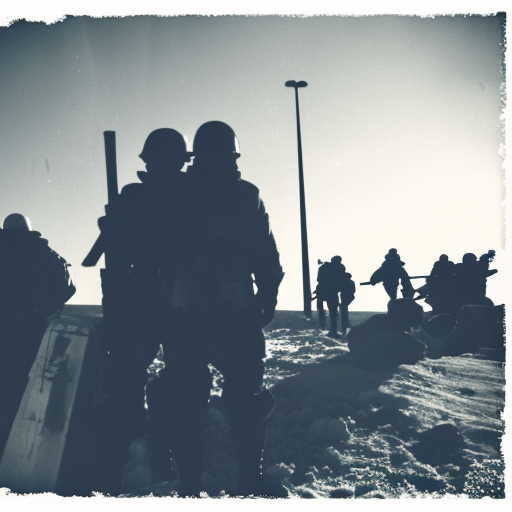The Northern Wars: A Summary
The Northern Wars were a series of conflicts that took place in Northern Europe during the 17th and early 18th centuries. These wars involved several major powers, including Sweden, Poland-Lithuania, Russia, and Denmark-Norway, and had a significant impact on the political and territorial landscape of the region.
Background:
The Northern Wars were primarily driven by a combination of religious, territorial, and power struggles. The Protestant Reformation had created tensions between Catholic and Protestant states, and these tensions often spilled over into armed conflict. Additionally, the desire for territorial expansion and control over lucrative trade routes played a crucial role in fueling the wars.
The Polish-Swedish War (1600-1629)
The Polish-Swedish War was the first major conflict of the Northern Wars. It began in 1600 when Sweden, under King Charles IX, sought to expand its influence in the Baltic region. The war initially focused on control over Livonia (modern-day Estonia and Latvia) and saw several battles and sieges. Eventually, in 1629, the Treaty of Altmark was signed, which recognized Swedish control over Livonia and marked a significant territorial gain for Sweden.
The Deluge (1655-1660)
The Deluge was a period of intense warfare and devastation in the Polish-Lithuanian Commonwealth. It began in 1655 when Poland was invaded by a coalition of neighboring powers, including Sweden, Russia, and Brandenburg-Prussia. The Polish-Lithuanian Commonwealth was weakened by internal conflicts and struggled to defend itself. The Deluge resulted in significant territorial losses for Poland, with Sweden gaining control over much of the country’s northern territories.
The Great Northern War (1700-1721)
The Great Northern War was the most significant and longest-lasting conflict of the Northern Wars. It began in 1700 when an alliance of several powers, including Denmark-Norway, Poland-Lithuania, and Russia, launched a joint invasion of Sweden. The war saw a series of battles and sieges, with Sweden initially facing setbacks but eventually regaining the upper hand under the leadership of King Charles XII.
One of the most famous events of the Great Northern War was the Battle of Poltava in 1709, where the Swedish army suffered a decisive defeat at the hands of the Russian forces. This battle marked a turning point in the war and led to a shift in power dynamics in the region.
The Great Northern War ended in 1721 with the signing of the Treaty of Nystad. The treaty confirmed Russia’s emergence as a major power in Northern Europe and resulted in significant territorial changes. Sweden lost several territories, including Livonia, Estonia, and parts of Finland, while Russia gained control over these regions.
Impact and Legacy
The Northern Wars had a profound impact on the political and territorial landscape of Northern Europe. Sweden, which had been a dominant power in the region, saw its influence greatly diminished. Russia emerged as a major player and expanded its territory, becoming a dominant force in the Baltic region. Poland-Lithuania suffered significant territorial losses and experienced a decline in power.
The wars also had devastating consequences for the civilian population, with widespread destruction, famine, and displacement. The conflicts disrupted trade routes and led to economic hardships for many countries involved.
In conclusion, the Northern Wars were a series of conflicts that shaped the political and territorial landscape of Northern Europe during the 17th and early 18th centuries. These wars were driven by religious, territorial, and power struggles and involved major powers such as Sweden, Poland-Lithuania, Russia, and Denmark-Norway. The wars resulted in significant territorial changes, with Sweden losing its dominance and Russia emerging as a major power in the region. The conflicts also had a devastating impact on the civilian population and disrupted trade and economic stability.












